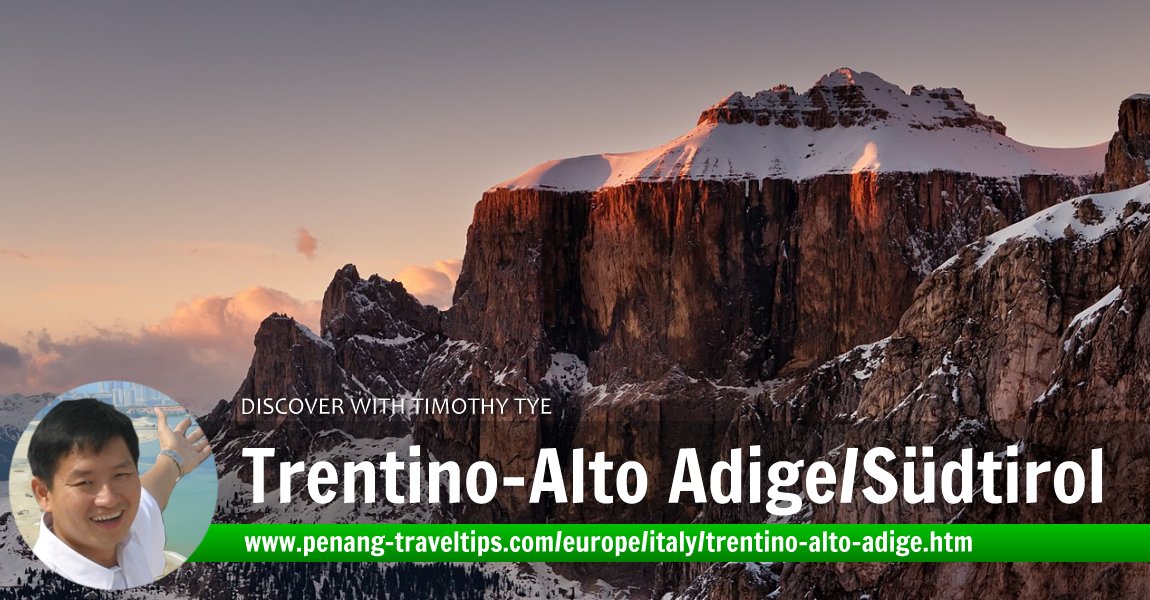 Sella group, including Piz Ciavazes, right, and Torri del Sella, left, in Trentino-South Tyrol
Sella group, including Piz Ciavazes, right, and Torri del Sella, left, in Trentino-South TyrolSource: https://commons.wikimedia.org/wiki/File:Gruppo_del_Sella.jpg
Author: Dmitry A. Mottl

Trentino-Alto Adige/Südtirol (Italian: Trentino-Alto Adige; German: Trentino-Südtirol) is a region on the northernmost part of Italy. Until 1919, when it was annexed by Italy, this region belonged to Austria-Hungary, and before that, the Austrian Empire and the Holy Roman Empire. It covers 13,607 sq km (5,254 sq mi) and has a population of around one million people (2012 estimate). The official capital of Trentino-Alto Adige/Südtirol is Trento, although the provincial capital of the two provinces alternate biennially in holding the regional assembly.
Members' dining experience in Trentino-Alto Adige/Südtirol
- ChyeLim Lee posted about dining on an Italian breakfast in a country house under the Alps in Trento on 17 September, 2019.
- ChyeLim Lee posted about the best yoghurt he has ever had at Confine Italo-Austriaco in Brenner on 17 September, 2019.
- ChyeLim Lee posted about dining on Italian Lobster Spaghetti, Garden Green Salad and Regional White Wine at Ristorante El Merendero in Trento on 17 September, 2019.
Members' Travel Shots of Trentino-Alto Adige/Südtirol
- ChyeLim Lee posted on Trento in South Tyrol on 17 September, 2019
- ChyeLim Lee posted on the Italian breakfast at Trento in South Tyrol on 17 September, 2019
- ChyeLim Lee posted on Brenner in South Tyrol on 16 September, 2019
Geography of Trentino-Alto Adige/Südtirol
Trentino-Alto Adige/Südtirol is a landlocked region. It is bordered by Veneto to the southeast, Lombardy to the southwest, Graubünden in Switzerland to the west and Tyrol in Austria to the north. Trentino-Alto Adige/Südtirol is extremely mountainous with some 70% of its terrain comprising mountains that exceed 1,000 meters in height. The presence of high mountains makes it a popular destination for winter sports.History of Trentino-Alto Adige/Südtirol
Human habitation in Trentino-Alto Adige/Südtirol goes back a few thousand years. The area was captured by the Romans in 15 BC, and remained within the Western Roman Empire until the 5th century AD. When the empire collapsed, control over the area passed to a number of invading Germanic tribes. From the 11th century, the region was ruled by prince-bishops who were vested with power to rule by the Holy Roman Emperors.The collapse of the Austro-Hungarian Empire in 1918 enabled Italy to occupy the region. The Fascist dictator Benito Mussolini then embarked on a program of forced Italianization of the region. During his rule (1922-1943), references to old Tyrol were banned. The region was called Venezia Tridentina from 1919 to 1947.
In 1938, Hitler and Mussolini had an agreement to transfer the German-speaking population of the region to German-ruled territory or disperse them around Italy, but the outbreak of World War II prevented this from being carried out. Nevertheless thousands of ethnic Germans were relocated and were only able to return to their homeland after the war.
After the war has ended, Italy and Austria signed the Gruber-De Gasperi Agreement to provide the region with considerable autonomy, making both German and Italian official languages in the region. However the German-speaking population as well as the Austrian government were unhappy with how the agreement was implemented, causing the issue to be brought to the United Nations in 1960. This led to fresh rounds of talks. By then German-speaking autonomists and separatists were staging bombing terrorisms in the area.
The issue of Trentino-Alto Adige/Südtirol was eventually resolved with a new treaty that was broadly satisfactory to the parties involved and helping to ease tensions.
Administrative Divisions of Trentino-Alto Adige/Südtirol
Trentino-Alto Adige/Südtirol comprises two autonomous provinces, Trentino and South Tyrol. Through the Gruber-De Gasperi Agreement of 1946, these two provinces enjoy special autonomy privileges including the right to initiate their own laws on a wide range of subjects. The introduction of the second Statute of Autonomy in 1972 provided even greater autonomy, with the transfer of the main competencies from the region to the two provinces.
Economy of Trentino-Alto Adige/Südtirol Trentino-Alto Adige/Südtirol produces mainly agricultural products such as wine, fruits and dairy. It is also an exporter of hydroelectricity. Tourism has become an increasingly important component of its economy.
Languages of Trentino-Alto Adige/Südtirol
Italian is the most common language in Trentino-Alto Adige/Südtirol, spoken by 63% of the population, followed by German, at 33%. Even so, Italian is the majority language only in Trentino, as German remains the majority language in South Tyrol. Italian tends to be the popular language in the major urban centers, including the capital of South Tyrol, Bolzano. In addition, there are minorities in Trentino-Alto Adige/Südtirol that speak Ladin, a group of dialects closely related to Romansh in Switzerland.
Trentino-Alto Adige/Südtirol on the map
The A22 is the main motorway through Trentino-Alto Adige/Südtirol. It connects Trento and Bolzano with Innsbruck, Austria, to the north and Verona to the south.Cities & Towns in Trentino-Alto Adige/Südtirol
- Trento - capital of Trentino
- Bolzano (Bozen) - capital of Alto Adige/Südtirol
- Andalo
- Arco
- Brunico (Bruneck)
- Campitello di Fassa
- Campo Tures (Sand in Taufers)
- Canazei
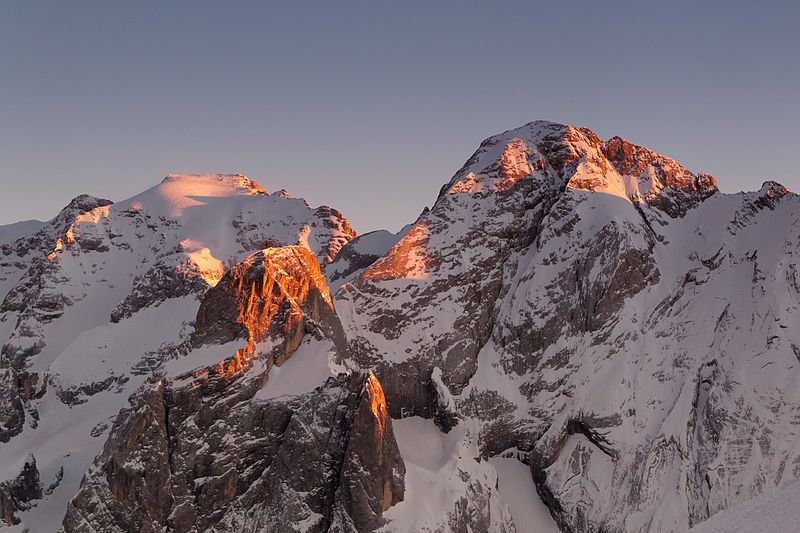 Sunset at Marmolada, the highest mountain of the Dolomites in Trentino-South Tyrol
Sunset at Marmolada, the highest mountain of the Dolomites in Trentino-South TyrolSource: https://commons.wikimedia.org/wiki/File:Marmolada_Sunset.jpg
Author: Dmitry A. Mottl

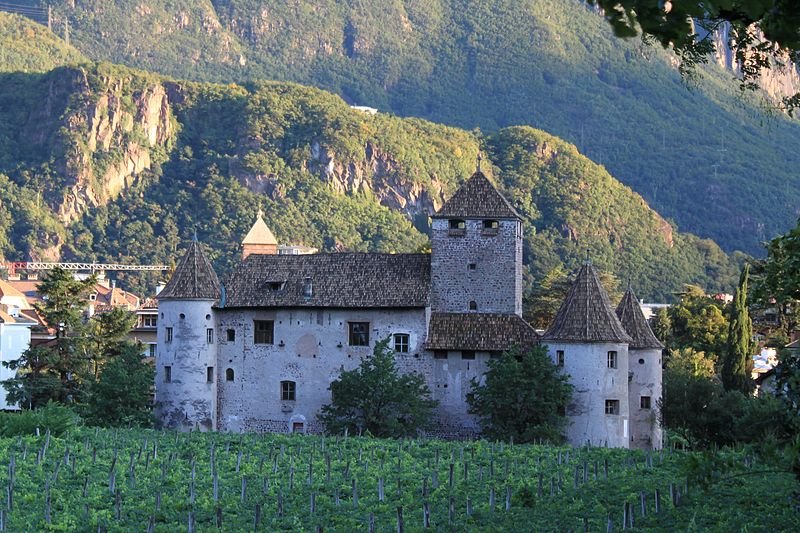 Schloss Maretsch in Bolzano, South Tyrol
Schloss Maretsch in Bolzano, South TyrolSource: https://commons.wikimedia.org/wiki/File:Schloss_Maretsch_(Nordansicht)_in_Bozen_S%C3%BCdtirol.JPG
Author: Vollmond11

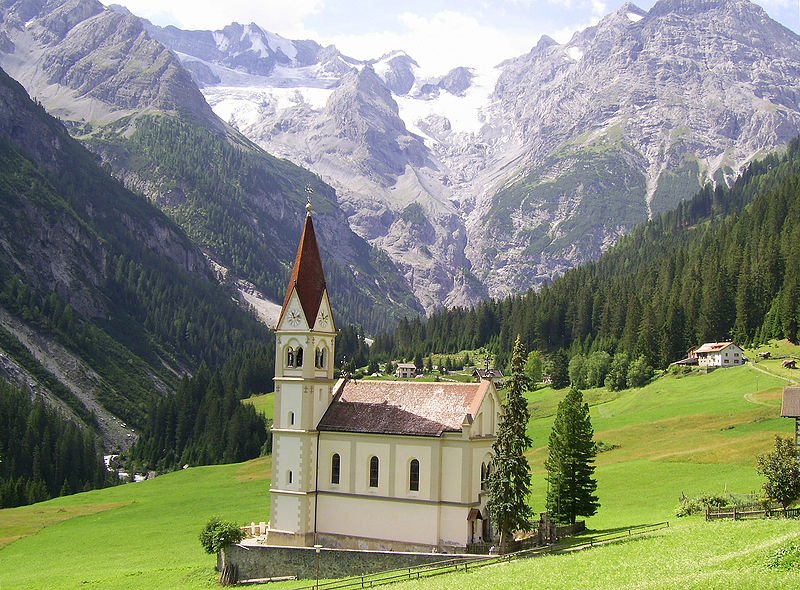 Church in Trafoi, South Tyrol
Church in Trafoi, South TyrolSource: https://en.wikipedia.org/wiki/File:Trafoi_01.jpg
Author: Kuebi

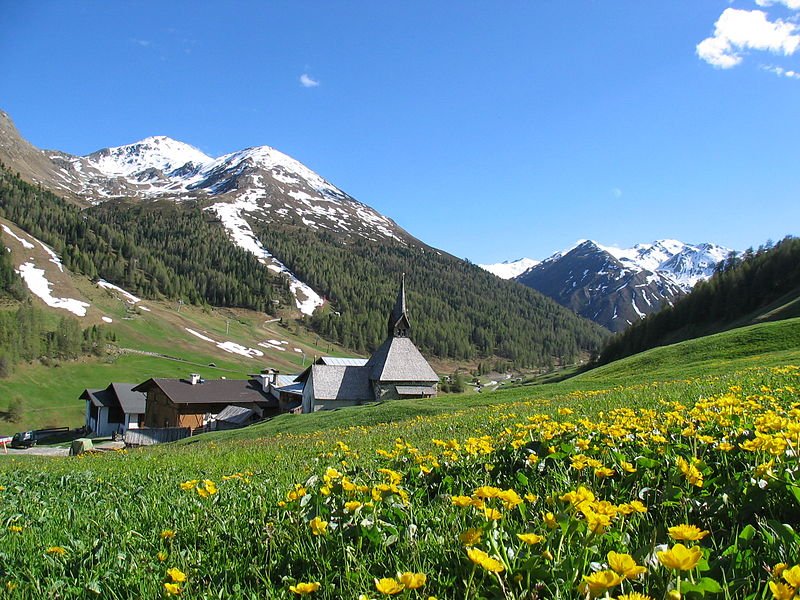 St Nicholas Chapel in Rojen, Südtirol
St Nicholas Chapel in Rojen, SüdtirolSource: https://commons.wikimedia.org/wiki/File:St-nikolaus-rojen.jpg
Author: Markus Moriggl

 Latest updates on Penang Travel Tips
Latest updates on Penang Travel Tips

Copyright © 2003-2025 Timothy Tye. All Rights Reserved.

 Go Back
Go Back